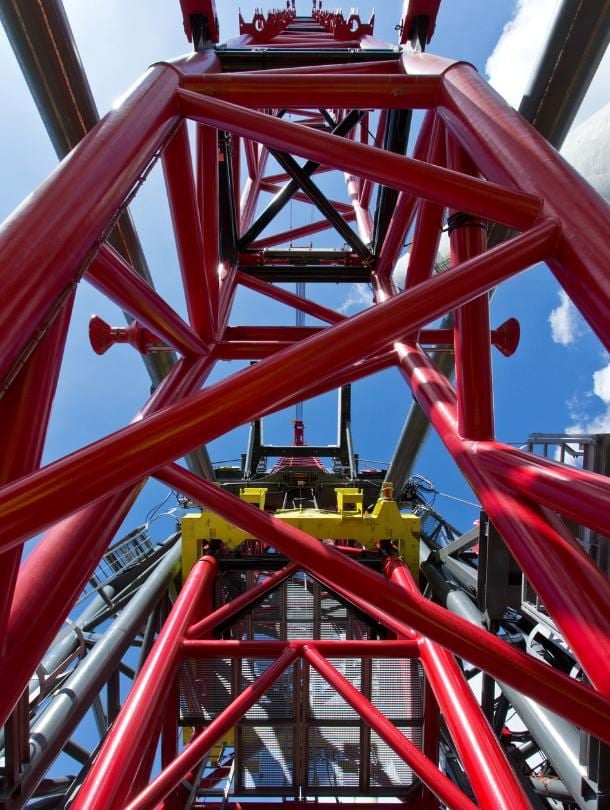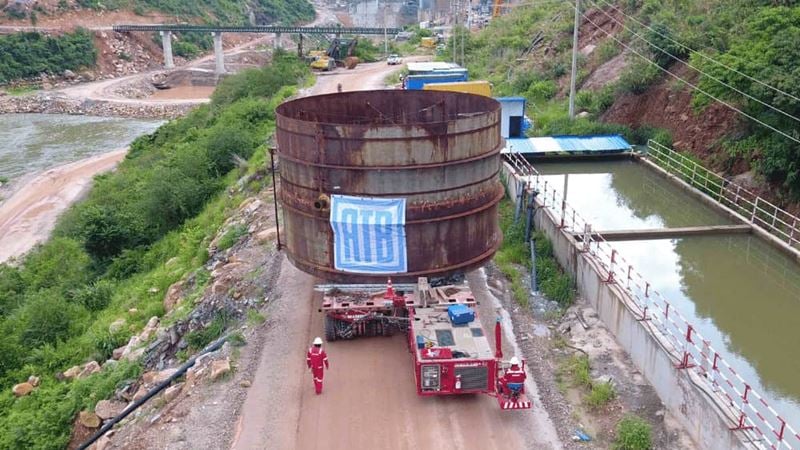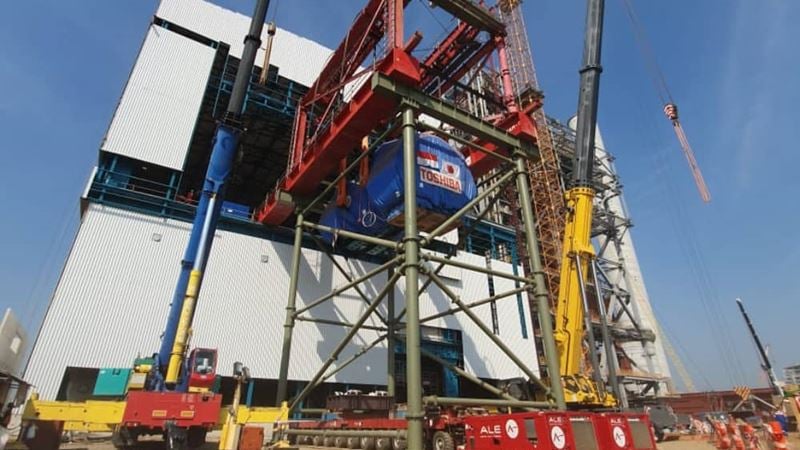
Sector:
Power Grid
Expertise:
Heavy transport
Load-in & load-out
Marine transport
Benefits:
Reduced preparation
Protected infrastructure
Optimized schedule
Location:
Cameroon
Sometimes the road less traveled isn’t a road.
In the coastal town of Kribi, Cameroon lies the Kribi Power Station. Mammoet had been commissioned to bring in the plant’s heavy components, but a significant challenge lay in transportation to the construction site.
Because the road leading from the main harbor to the site wouldn’t carry heavy loads, an alternative solution was needed to get all the components to the power station. By engineering a beach landing, Mammoet bypassed the unsuitable roads and delivered several large components to the site while saving a significant amount of time on the way.
Most of these components came in through the port of Douala, some 180 kilometers north of Kribi. Transporting the bigger components over land was simply impossible due to obstacles and bridges en route to the power station. As Kribi doesn’t have a suitable port to unload heavy cargo, either, transportation confronted a serious bottleneck. But after extensive planning and calculating, Mammoet came up with a solution that required neither roads nor harbors.
Instead of using a regular port to transfer the load, Mammoet engineered a landing point on a beach just three kilometers from the construction site. By building a ramp on a secluded beach, Mammoet created a makeshift mooring location for the barges transporting the power station’s components. Despite strong winds and currents, each of them was rolled safely onto the narrow beach.
In an 11-month operation, Mammoet delivered 13 x 280-ton engines, 300 containers, and 3,000 cubic meters of break bulk cargo, including several transformers, to the job site in Kribi. The containers and bulk cargo were transported to Kribi via land by regular trucks.
By choosing to ship the large components over the sea, the time and money spent on upgrading the infrastructure from Douala could be kept to a minimum. Mammoet’s unorthodox solution to the logistic problem not only got the components to their destination, but it also proved to be more time and cost-effective than any other method.




